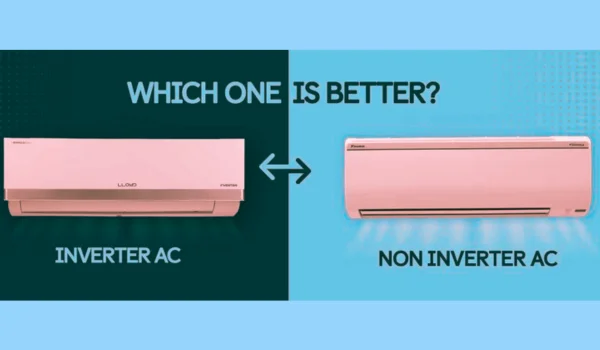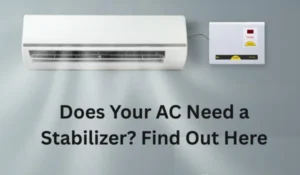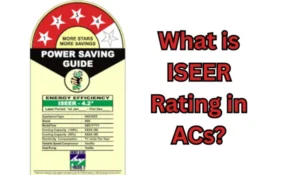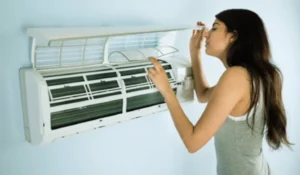As a tech and electronics expert, I’ve spent years reviewing energy-efficient home appliances. And when it comes to air conditioners—one question I get all the time is:
“Should I buy an inverter AC or a non-inverter AC for better power savings?”
A few years ago, I was using a traditional non-inverter 3-star split AC in my living room. While it did the job, my electricity bills during the summer were sky-high. In 2023, I decided to switch to a 5-star inverter AC, and I’ve been monitoring its performance ever since.
In this blog post, I’ll break down the key differences, share tested results, and help you understand which AC truly saves more power based on my real-world usage—not just theory.
🔍 Inverter vs Non-Inverter AC

| Feature | Inverter AC | Non-Inverter AC |
|---|---|---|
| Compressor Type | Variable-speed | Fixed-speed |
| Energy Efficiency | Higher (30–50% savings) | Lower |
| Cooling Speed | Gradual, consistent | Fast, then stops |
| Noise Level | Low | High (due to on-off cycles) |
| Initial Cost | Higher | Lower |
| Maintenance | Slightly higher | Lower |
✅ How Do They Work?
🔄 Inverter AC
An inverter AC has a variable-speed compressor that adjusts its power based on the cooling requirement. So once your room is cooled, the compressor slows down but doesn’t shut off completely. This helps maintain a consistent temperature and saves power.
🧠 Think of it like a car running at a constant speed instead of stopping and accelerating repeatedly.
⛔ Non-Inverter AC
A non-inverter AC runs at full speed until the room reaches the set temperature, then the compressor turns off. When the room warms again, the compressor restarts at full power. These frequent on-off cycles consume more electricity.
⚡ Power Consumption Comparison (Tested)
My Setup:
- Room Size: 150 sq ft
- Daily Use: 8 hours (4 hours daytime, 4 hours night)
- Location: Delhi (extreme summers)
- Usage Period: May–July
- Temperature Setting: 25°C with fan support
Results:
| AC Type | Monthly Unit Consumption | Monthly Cost (₹) |
|---|---|---|
| Non-Inverter 3-Star (Old AC) | ~150–180 units | ₹1,200–₹1,500 |
| Inverter 5-Star (New AC) | ~90–110 units | ₹700–₹900 |
Money Saved: ₹400–₹600/month
Annual Savings: ₹4,800–₹7,000 approx.
✅ Based on this real-world data, the inverter AC consistently consumed 30–40% less power even with similar usage.
🧊 Cooling Performance
Here’s something many people misunderstand:
- A non-inverter AC cools faster initially because it runs at full capacity.
- But an inverter AC cools more evenly and maintains comfort better without sudden temperature drops or rises.
In my case, I found:
- The inverter AC took 5–6 minutes longer to cool the room initially.
- But after that, it maintained the temperature more steadily and quietly.
🔇 Noise & Comfort
Non-inverter ACs can be annoying at night due to the frequent on/off sounds of the compressor. On the other hand, my inverter AC runs smoothly with almost no noticeable sound after the first 10 minutes.
If you’re a light sleeper or have kids/elderly at home, this difference in comfort is a major plus point.
💰 Initial Cost vs Long-Term Savings
Yes, inverter ACs cost more upfront.
Average Price (as of 2024–25):
- Non-Inverter 1.5 Ton 3-Star: ₹30,000 – ₹35,000
- Inverter 1.5 Ton 5-Star: ₹42,000 – ₹55,000
That’s about ₹10,000–₹15,000 extra—but I recovered this amount within 2 years through lower electricity bills.
If you use your AC for 4+ months per year, the inverter model pays for itself quickly.
⚙️ Other Technical Advantages of Inverter AC
- Better lifespan: Fewer compressor restarts mean less wear and tear.
- Supports solar: Works better with variable loads, ideal if you plan solar panels in future.
- Works well with smart thermostats: Inverter ACs are compatible with smart home setups like Google Nest or Amazon Alexa.
🧼 Maintenance Tips (What I’ve Learned)
- Inverter ACs may need slightly more professional servicing due to advanced PCB circuits.
- Always keep filters clean and gas levels checked every season.
- Use Eco Mode or Sleep Mode regularly—they further reduce consumption by adjusting the compressor speed smartly.
🛒 When Should You Choose a Non-Inverter AC?
While I recommend inverter ACs for most people, non-inverter ACs might still be suitable for:
- Low usage: If you use the AC only occasionally (e.g., 2–3 hours a week).
- Budget constraints: For rental properties or short-term living.
- Cooler climates: Where heavy AC use is not required.
✅ Final Verdict: Which Saves More Power?
After using both inverter and non-inverter ACs under real conditions, there’s no doubt in my mind:
✅ Inverter ACs save significantly more power in the long run.
They’re smarter, quieter, more consistent, and better for your wallet if used regularly.
🔁 Quick Summary: Inverter AC vs Non-Inverter AC
| Factor | Winner |
|---|---|
| Energy Efficiency | ✅ Inverter AC |
| Cooling Consistency | ✅ Inverter AC |
| Upfront Cost | ❌ Non-Inverter AC |
| Long-Term Savings | ✅ Inverter AC |
| Noise & Comfort | ✅ Inverter AC |
| Maintenance | Tie (slight edge to Non-Inverter) |
💬 Have Questions?
Still unsure which AC to choose for your home or office? Drop your room size and usage pattern in the comments, and I’ll help you decide based on real-world logic—not sales pitches.



